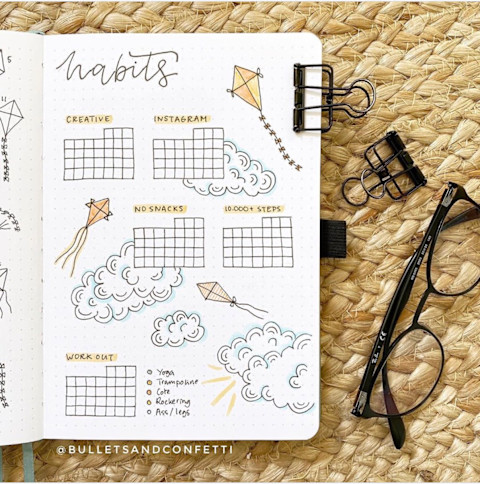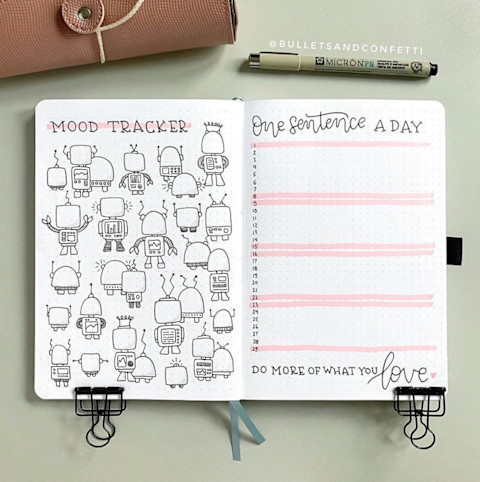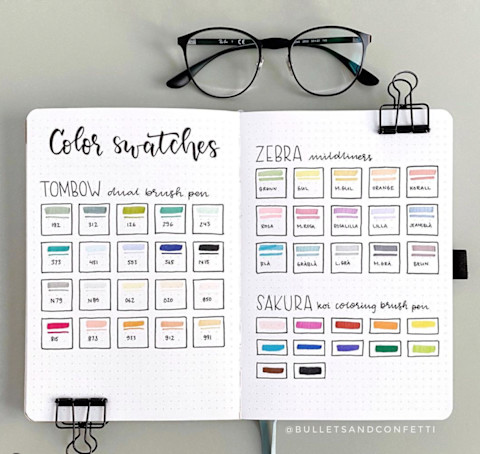
You never really know what you're going to get when you flip through someone's bullet journal. More of a time capsule than a diary, the bullet journal is an organizational tool that can be filled with doodles, drawings, and diagrams—and those are just the d's! Once you have the basics covered with a future log, monthly log, daily log, and index (you can learn all about those in this bullet journal primer), you're free to create miscellaneous pages or "collections" in your journal from there.
"Bullet journal collections can be anything," Silje Sandvik, a bullet journaling enthusiast based in Norway, tells mbg. "Ongoing projects, things you want to focus on, things you want to research, remember or save for later." Here, Sandvik shares some of her favorite ideas for collections that are as beautiful as they are practical.
1. Track your habits.
Made a promise to yourself that you'll work out more or check Instagram less? This collection can help keep you accountable. "You can have weekly trackers, monthly trackers, or even trackers for a whole year," says Sandvik. Once you do that task for the day, you can get the satisfaction of crossing it off your calendar.
2. Keep tabs on your mood.
Sandvik says this one is as fun to look back on as it is to make and can provide a helpful picture of how your mood changes over time. "Use three to six colors—one color for each mood—and color in the circles or squares before going to bed." Pairing your mood color with a "sentence a day" collection (more on those below) can provide some more context on what triggers you.
3. Reflect on the day.
At the end of the long day, you're probably too tired to journal about what happened over the last 24 hours. Summing it up in a sentence can feel more doable. This is another one that's fun to look back on when some time has passed and can be a tool for jogging memory and tracking mood. Pair it with your mood tracker to turn it into a "spread"—bullet journal speak for a few of pages that relate to the same theme.
4. Color yourself calm.
In theory, bullet journals are supposed to help people live more efficiently—but they can be a creative outlet too. Many journalers will collect a rainbow of colored pens to use to decorate their pages, and a spread like this can help you see what a particular shade will look like on your pages, since different journals will have different paper qualities and colors. "Having a spread to show all markers and brush pen colors can help you save time," says Sandvik.
5. Keep a running wishlist.
"As simple as it sounds, it's really handy to have a wishlist!" says Sandvik, who usually likes to start one of these collections before a holiday or birthdays. You can also keep a list of potential gifts for other people and just jot them down as they come to you. You can also keep multiple wishlists for multiple categories: clothes, household items, etc.
6. Keep tabs on your plants.
Yes, two of today's biggest trends—plant parenthood and bullet journaling—can go hand in hand. Sandvik uses her plant collection to keep tabs on how often each one of her plants need water and when she watered it last. She says the result is as practical as it is aesthetic: "No more rescuing half-dead plants!"






